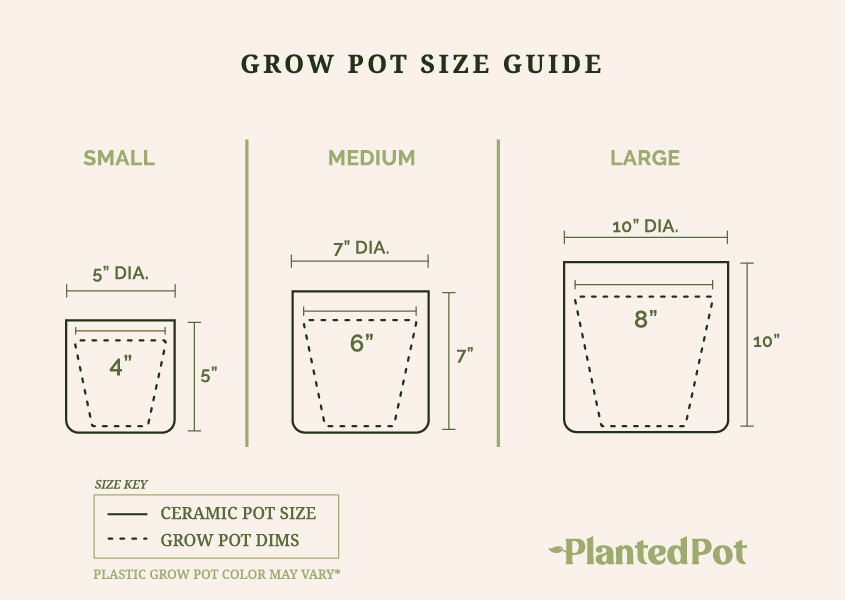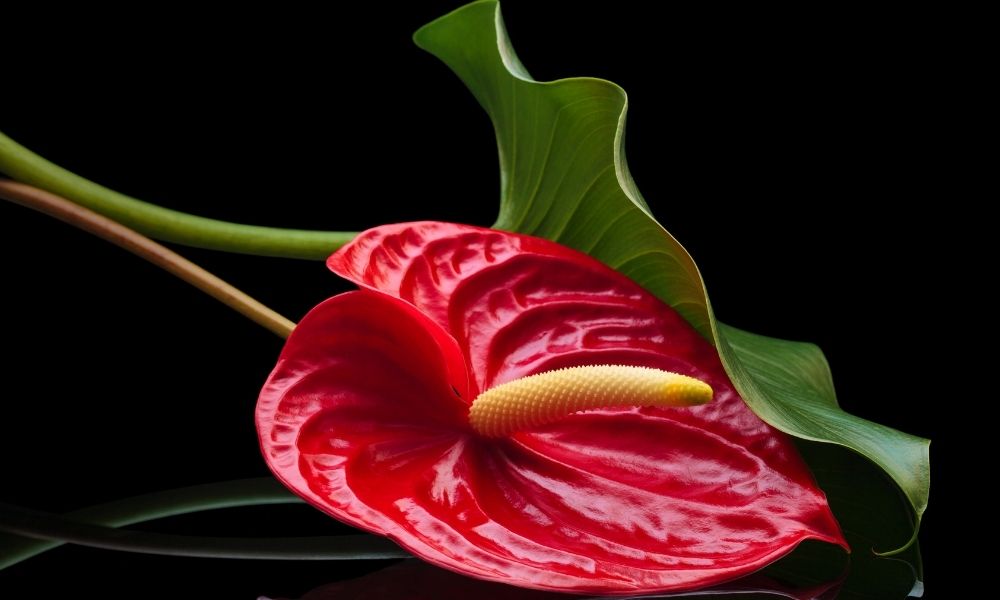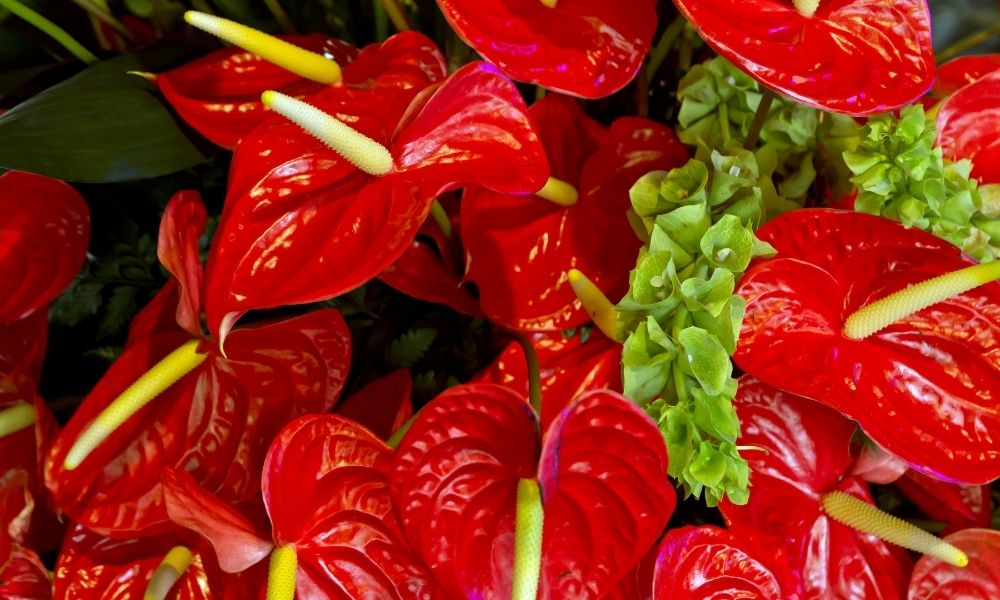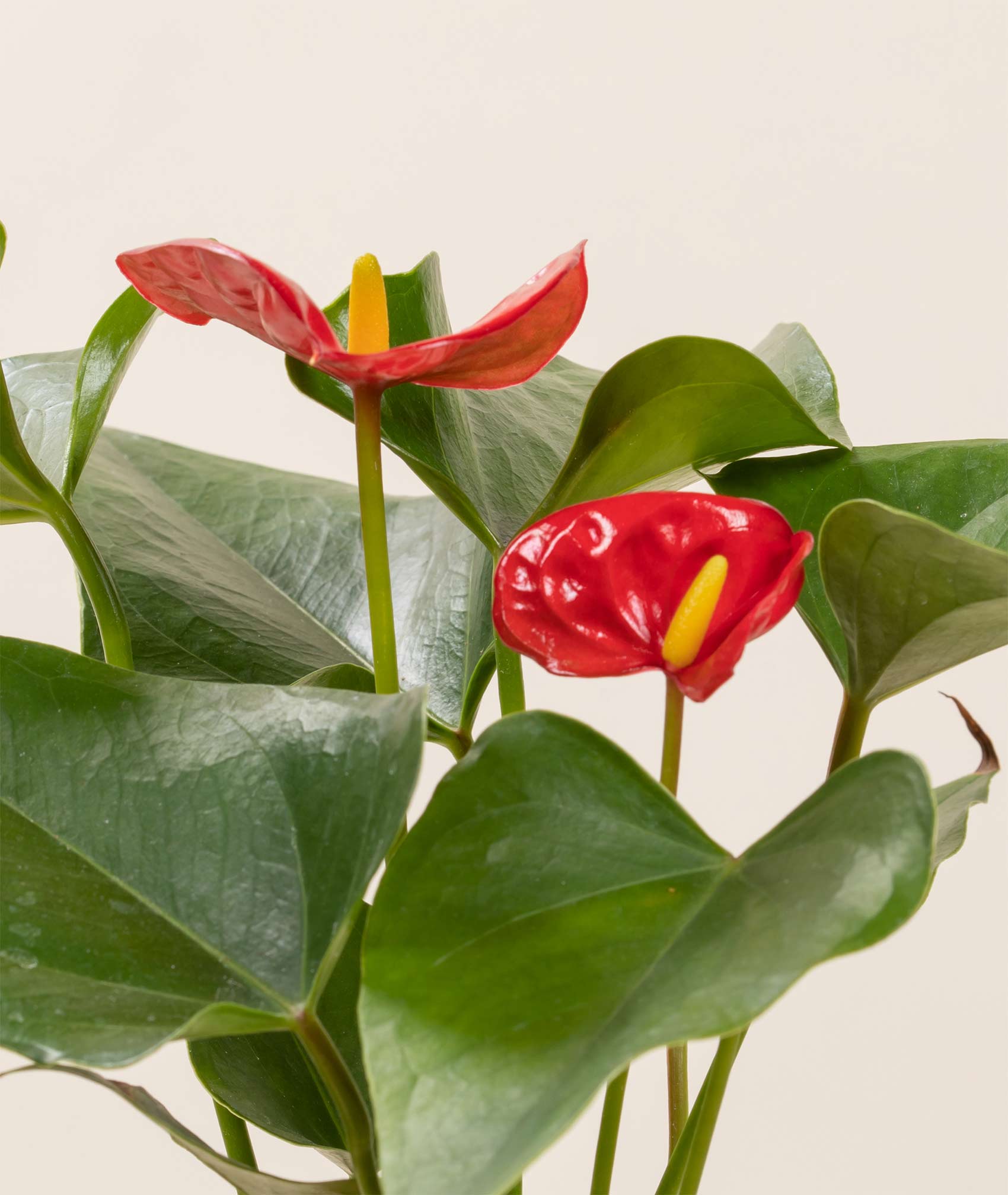
Red Anthurium
$47
 Plastic grow pots come in different colors, you may receive a black or rust colored pot.
Plastic grow pots come in different colors, you may receive a black or rust colored pot.
The Anthurium Red is a stunning plant with strikingly bright red leaves (called spathes) that complement green foliage. The eye-catching red leaves, almost in the shape of a heart, symbolize hospitality and promise a life of happiness and abundance. If its beauty and promising benefits are not enticing enough for you, the Anthurium Red plant is relatively easy to grow and upkeep. Anthurium plants can withstand any lighting level, but they will only bloom in medium to bright light. If you are seeking to add a bit more red to your home, the Anthurium Red is the place to start.
Bright indirect light
Every 1-2 weeks (when the soil is dry to the touch)
65° – 85°F
Related Products
Red Anthurium
Anthurium is a genus containing around 1,000 species of plants native to the Caribbean, Central America, and northern South America. While anthuriums prefer to be grown in outdoor gardens in warm climates, they are more often grown as houseplants by particularly driven enthusiasts willing to put forth a bit of extra effort to care for a plant that can be quite fussy.
While some species are highly sought after for their beautiful and stunning exotic flowers, others are grown specifically for their lush foliage. The varieties of these plants known to flower are distinctive for their red or yellow tail-like flower spikes and brilliant, multicolored spathes—other varieties of anthurium feature deeply veined, large-leaved foliage.
While many anthuriums are climbers, every type of Anthurium requires warmth and high humidity to thrive. Anthuriums tend to thrive when grown in greenhouses, and you’d be hard-pressed to find a type of Anthurium that is particularly well-suited for domestic, indoor living without a great deal of attention and care. Let’s take a look at one of our favorites, the Red Anthurium.
What is a Red Anthurium?
Did you know that the Anthurium’s colorful “flowers” are actually modified leaves? The plant’s actual flowers grow from the center structure called an inflorescence. Initially found in Colombia and Ecuador, around the Andes Mountains range, these stunning floral beauties enjoy a warm and sufficiently humid spot in your home.
- Size: the Red Anthurium is a slow-growing plant with a mature height of about 12 to 18 inches, with a 9 to 12-inch spread.
- Light Requirements: Whether you place them indoors or out, anthuriums tend to grow best in bright, indirect light. Take care to avoid direct sun, as it can burn the delicate leaves.
- Temperature: All anthuriums are native tropical plants. For the best chances for success, we suggest attempting to mimic those conditions. This plant tends to thrive in areas with temperatures between 65 and 85 degrees Fahrenheit and high humidity. These plants will likely perish at temperatures 40 degrees or less. Because of this, we suggest only attempting to grow them outside in zones 11 to 12. During dry winter months or in regularly dry climates, take care to mist the plant every day to ensure its humidity levels stay high enough. You may find it beneficial, or even necessary, to constantly run a humidifier during dry months.
- How Often to Water: Ensure to keep the soil slightly moist and never allow it to dry out completely. Wes suggests setting your Red Anthurium’s pot in a tray of water-filled gravel. This will help to keep humidity levels high and help the plant drain. Allow the top of the soil to dry just a bit before watering again.

Why Choose a Red Anthurium Plant for Your Home?
Anthurium signifies friendship and long-lasting love and is thought to bring luck into your relationships. Topping NASA’s air purifying plant list, the Anthurium has proved itself to be one of the best houseplants to have in your home.
The Anthurium very rarely has downtime between each bloom, making it an excellent pick for the bedroom. The more indirect bright light this plant takes in, the more stunning bright ‘flowers’ it will produce. This means that you can keep it on a sunny windowsill all year round!
As previously mentioned, You can find anthuriums on NASA’s list of air-purifying plants, as they happen to be one of the best houseplants for purifying indoor air. Their large, dark leaves suck up formaldehyde, xylene, ammonia, and toluene, so they’re a thoughtful present for any space that printers, adhesives, and copiers are sure to be found. This simple fact makes livening up your office with a beautiful red anthurium both practical and aesthetically pleasing!
Mental Health Benefits
There are so many benefits that come with owning a house plant. But did you know that houseplants can even improve your health? “But how?” we hear you wondering. In the simplest of terms, plants do the opposite of what we do when we breathe: they release oxygen and absorb carbon dioxide.
This not only freshens up the air you breathe, but it also eliminates harmful toxins and chemicals in the air that may have potentially gone completely unnoticed! Extensive research conducted by NASA has shown that houseplants can remove nearly 90% of airborne toxins in as little as 24 hours. Various studies have also proved that indoor plants can help boost concentration and productivity by up to 15 percent! On top of that, plants can help improve your mood and reduce stress levels— making them not only a perfect addition to your home but perfect for your workspace as well!
We suggest placing plants with broad leaves on or near your desk in the workplace. This will not only help increase positivity levels, but the plant will actively regulate humidity as well. Seeing greenery and nature can help us feel more positive, calm, and relaxed, which can help to benefit our mood on a day-to-day basis. Plants can serve both an aesthetic and a practical purpose in your life and may even enhance your quality of life!
Air Purifier
We all know that clean air can be hard to come by in today’s world. Why not be proactive and clean the air you breathe on your own? While we hate to be the ones to break it to you, purifying the air on your own without any external help may prove to be quite challenging. But worry not, friend! Before offending your bank account by purchasing an expensive air purifier, perhaps consider that the beautiful plant life in your home may be able to take care of this problem for you!
It is common knowledge that trees and plants clean the air we breathe and improve air quality by producing oxygen and absorbing carbon dioxide. What part of that is there not to love! In fact, According to a study conducted by NASA, indoor plants can absorb contaminants such as benzene and formaldehyde, which are both known to be carcinogens and terrible house guests.
Adds Color & Texture
You’d be hard-pressed to find someone who is not in agreement that plants are beautiful. Many plant owners have reported that bringing a new plant into your home or workspace can feel like a breath of fresh air. You can let your imagination run wild and add an endless amount of natural textures and patterns to your home with a well-placed anthurium.

Long-lasting and Beautiful
And what’s most extraordinary about the Anthurium, you may ask? The most extraordinary benefit you’ll get with the Anthurium is that you can provide consistency throughout your home décor with a single plant.
You’ll want to take a few blooms and put them in matching vases to link that color through a specific room. Even a single, lone bloom looks beautiful in a sleek and elegant vase. Another added benefit; you won’t have to change them out constantly as the Anthurium is an incredible specimen that can last up to a month, so long as it has water!
Are Red Anthuriums Good Indoors & Outdoors?
Anthurium plants grow best in bright, indirect light. While they can tolerate all indirect light levels, anthuriums growing in low light will grow slower and have fewer flowers. However, Anthuriums cannot tolerate direct light, as this can burn the leaves.
Are Red Anthurium Plants Pet and Children Friendly?
This plant, similar to other plants in the Araceae family, contains insoluble calcium oxalate crystals. Biting into or chewing on this plant will release these crystals, potentially irritating the mouth and GI tract or tissue penetration.
While very rare, swelling of the upper airway has been known to occur in pets that unknowingly take a bite of an anthurium’s leaves, making it difficult for them to breathe. Take your pet to the vet or another animal healthcare professional immediately if your pet consumes an anthurium or if they demonstrate any of the symptoms listed below:
What to watch for:
- Decreased appetite
- Vomiting
- Drooling
- Pawing at the face or mouth
- Oral pain
Croton Red Anthurium Plant Family Relatives
Anthurium, a genus comprised of tropical American plants, includes roughly 825 species within the arum family (Araceae), many of which are collector’s plants, famous for their foliage. Anthurium andraeanum, sometimes referred to as painter’s palette or the flamingo lily, is native to Ecuador and Columbia.
Like bromeliads and orchids, the Anthurium is an epiphytic evergreen tropical perennial belonging to the Arum family. They grow best under cover of other plants. If the light is too intense (such as a hot, west-facing exposure near a window), your Anthurium’s leaves will burn.
Anthuriums come in many shapes and sizes, but here a few common varieties often sold as house plants below:
- A. scherzerianum: The easiest to care for anthuriums feature a curling orange flower spike with arrow-shaped leaves.
- A. andreanum: These feature heart-shaped leaves that grow up to 1 foot, with flowers available in white, red, white, pink, and multicolored patterns. A straight flower spike distinguishes them.
As mentioned previously, the Anthurium is a collector’s plant, with the most stunning varieties rarely being found outside of botanical gardens and greenhouses. Other, more rare, species to consider adding to your collection include:
- A. crystallinum: These have velvety, deep green leaves with pronounced white ribs. They have leaves that can grow up to 2 feet across.
- A. faustinomirandae: A plant of monstrous proportions with leaves as stiff as cardboard that can grow up to 5 feet long. This plant is found almost exclusively in greenhouses.
Plants That Are Similar to the Croton Red Anthurium
Anthurium leaves come in many different shapes and sizes. There are over two dozen varieties of this beautiful houseplant in the world. Regardless of which variety you bring into your home, they all require the same general care. Additionally, they’re likely to liven up your space with that splash of greenery that you’ve been searching for!
Here’s a list of various plants that are similar to the Anthurium that are great for homes:
- Pothos
- Monstera
- Arrowhead Plant
- Peace Lily
- Kalanchoes
- Amaryllis
- Phalaenopsis Orchids
Final Thoughts – Red Anthurium
The Anthurium is an underrated houseplant. You’ve likely seen it in offices due to the fact that it is extremely low maintenance. It can also tolerate low light! These single-petal flowers provide a bright pop of color and a smooth elegance wherever your home needs it!
Proper plant care for anthuriums is not complicated. Once you have suitable soil and the right location, watering becomes extremely simple. An anthurium growing in your home or garden is sure to reward you with beautiful, long-lasting flowers.





Reviews
There are no reviews yet.